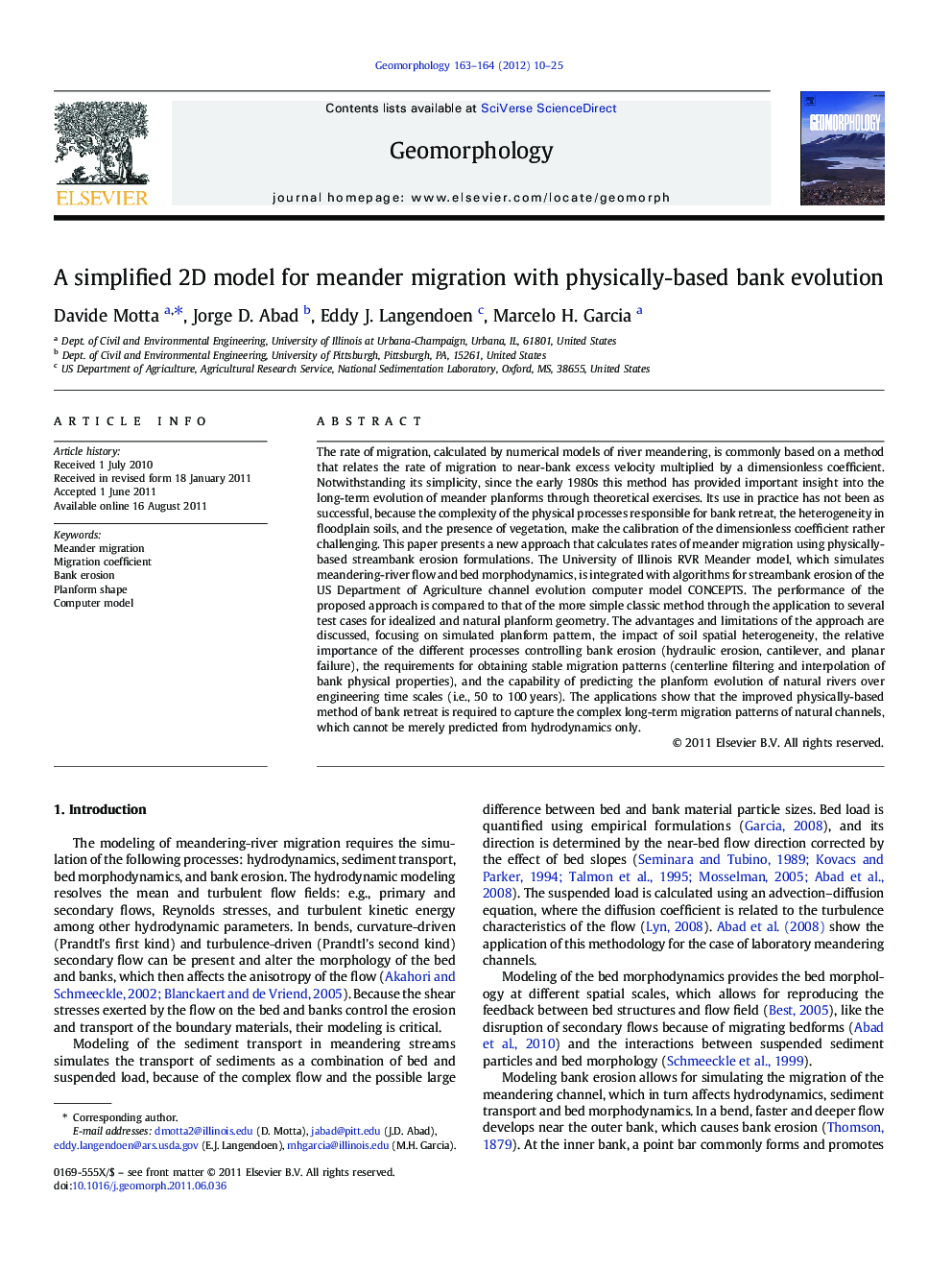| Article ID | Journal | Published Year | Pages | File Type |
|---|---|---|---|---|
| 6432895 | Geomorphology | 2012 | 16 Pages |
The rate of migration, calculated by numerical models of river meandering, is commonly based on a method that relates the rate of migration to near-bank excess velocity multiplied by a dimensionless coefficient. Notwithstanding its simplicity, since the early 1980s this method has provided important insight into the long-term evolution of meander planforms through theoretical exercises. Its use in practice has not been as successful, because the complexity of the physical processes responsible for bank retreat, the heterogeneity in floodplain soils, and the presence of vegetation, make the calibration of the dimensionless coefficient rather challenging. This paper presents a new approach that calculates rates of meander migration using physically-based streambank erosion formulations. The University of Illinois RVR Meander model, which simulates meandering-river flow and bed morphodynamics, is integrated with algorithms for streambank erosion of the US Department of Agriculture channel evolution computer model CONCEPTS. The performance of the proposed approach is compared to that of the more simple classic method through the application to several test cases for idealized and natural planform geometry. The advantages and limitations of the approach are discussed, focusing on simulated planform pattern, the impact of soil spatial heterogeneity, the relative importance of the different processes controlling bank erosion (hydraulic erosion, cantilever, and planar failure), the requirements for obtaining stable migration patterns (centerline filtering and interpolation of bank physical properties), and the capability of predicting the planform evolution of natural rivers over engineering time scales (i.e., 50 to 100Â years). The applications show that the improved physically-based method of bank retreat is required to capture the complex long-term migration patterns of natural channels, which cannot be merely predicted from hydrodynamics only.
